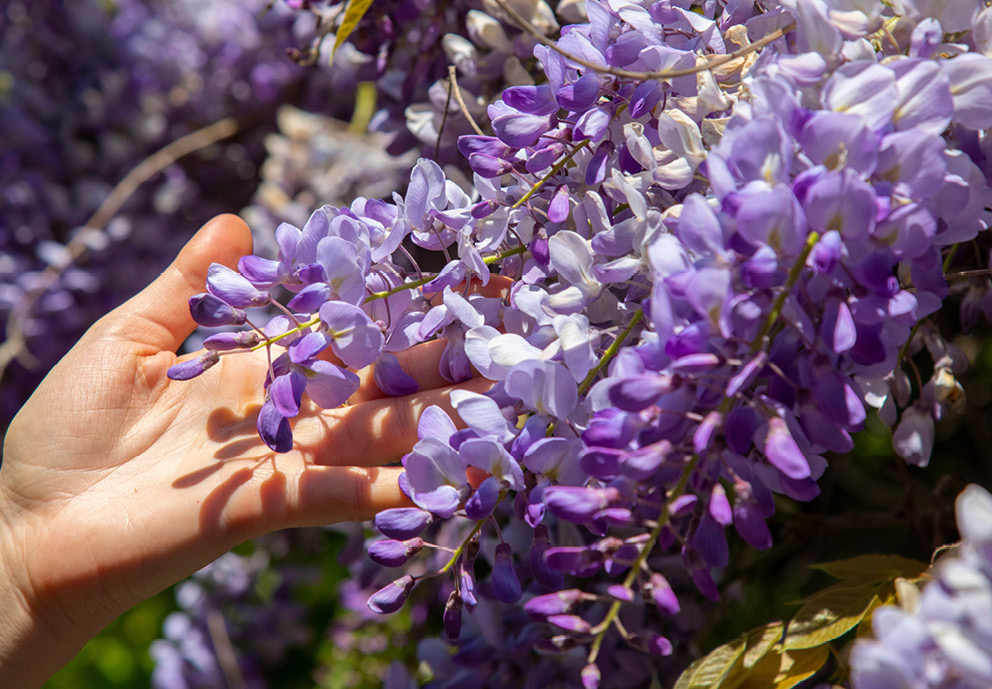Growing and Caring for Wisteria
January 2nd, 2024 | Categories
High up on the desirability list of plants and shrubs among gardeners is the magical and gorgeous wisteria. Whenever this fantastic shrub is called to mind, we often think of it growing up the front of an old farmhouse, a sunny wall, or completely covering a garden pergola with all its lovely oval-shaped purple clusters of flowers, creating a fairy-tale atmosphere; so, it’s no wonder it’s popular!
Wisteria is a deciduous and vigorous climbing shrub, but it can also be grown as a tree. Its flowers are not only a stunning sight, but they also have a beautiful scent. They flower from mid-spring into summer, and flowers are coloured in shades of purple, white or pink. Their stems are incredibly thick and strong, and in time will grow as thick as a tree trunk. Wisteria truly are wonderful shrubs that are just perfect for adding instant impact and interest to the garden.
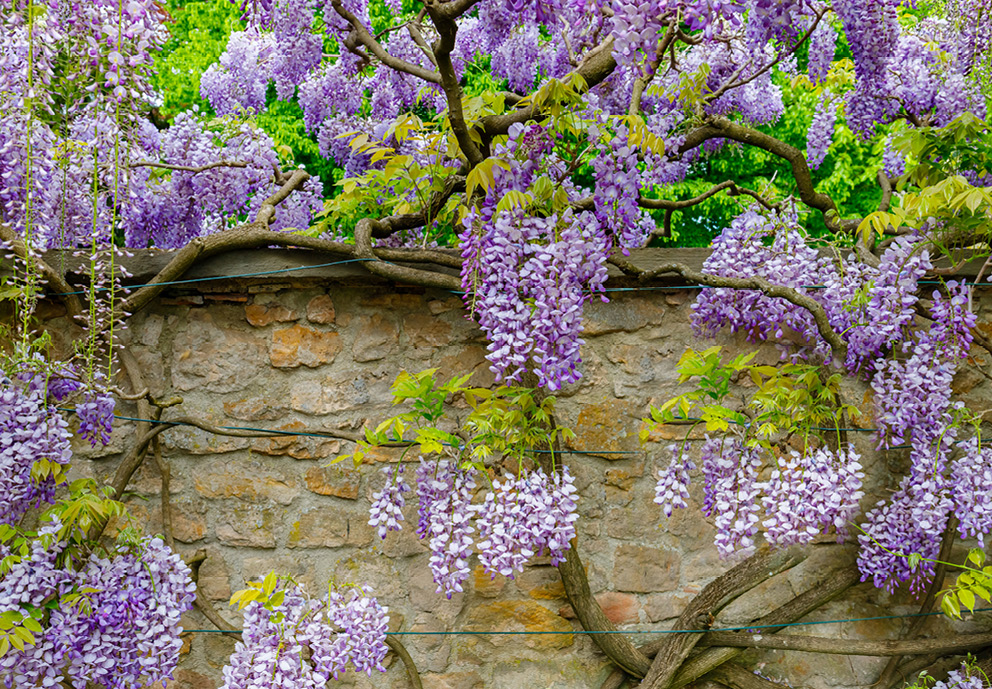
In this guide, we’ll detail more about wisteria and provide all the information you need to successfully grow them in your garden and have them blooming for years to come. They aren’t as hard to grow as one would think and following our guide, even newbie gardeners will find success.
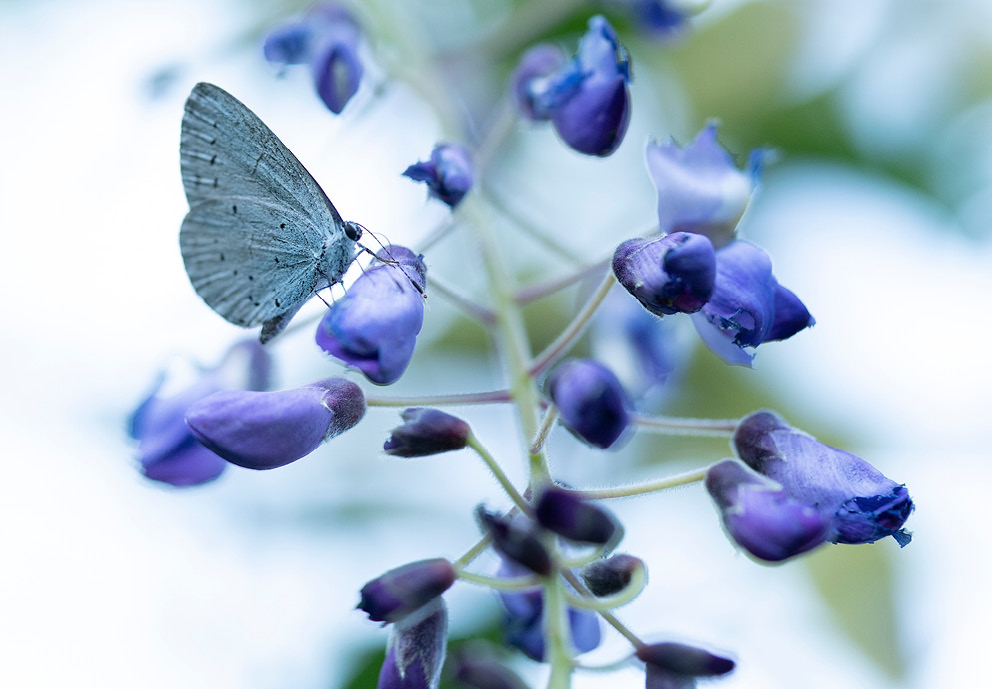
Wisteria Factsheet
- Plant type: Climber, deciduous, shrub/tree
- Flower colours: Purple, pink, lilac, white
- Flowers: Spring, Summer
- Prune: Generally after blooming
- Sun exposure: Full sun, part sun
- Hardiness: Hardy
- Soil type: Well-draining, rich soil
- Wildlife: Bees, butterflies and other insects
- Potential Height and Spread: 5m and 3m
Popular Varieties
There are two main species of Wisteria.
Japanese Wisteria which is called Wisteria Floribunda. These are well-known for their longer and very abundant flower clusters. The variety macrobotrys is widely available and has fantastically long racemes of flowers. Apparently, the record for a raceme is 6ft although 3ft is more common. Because of their long length, these are more suited to growing on structures like a pergola where their flowers can hang down to full effect. Japanese Wisteria twine clockwise.
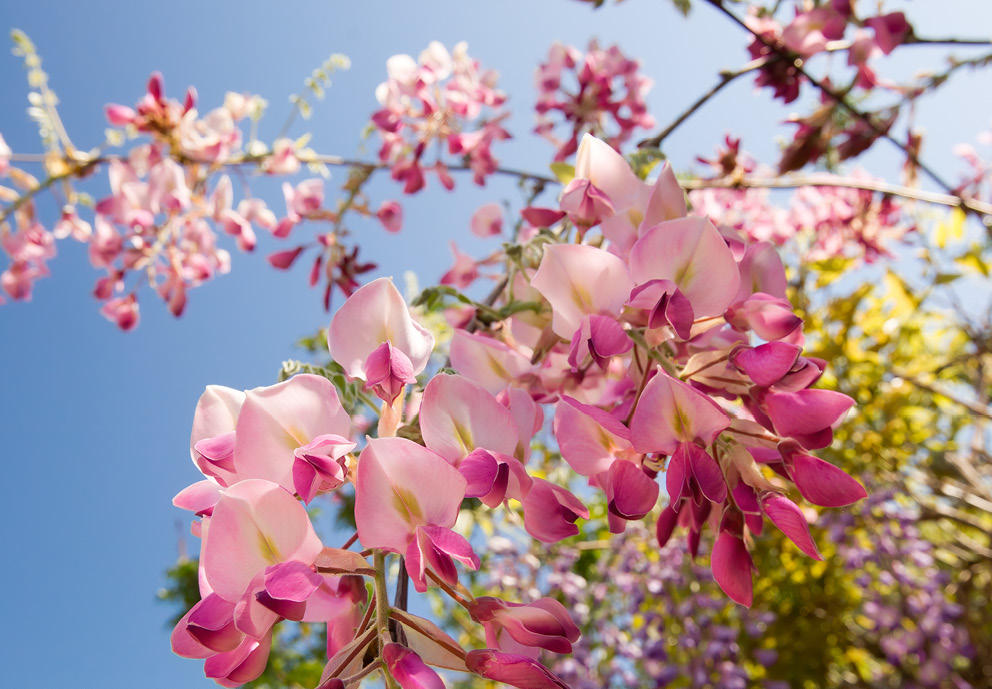
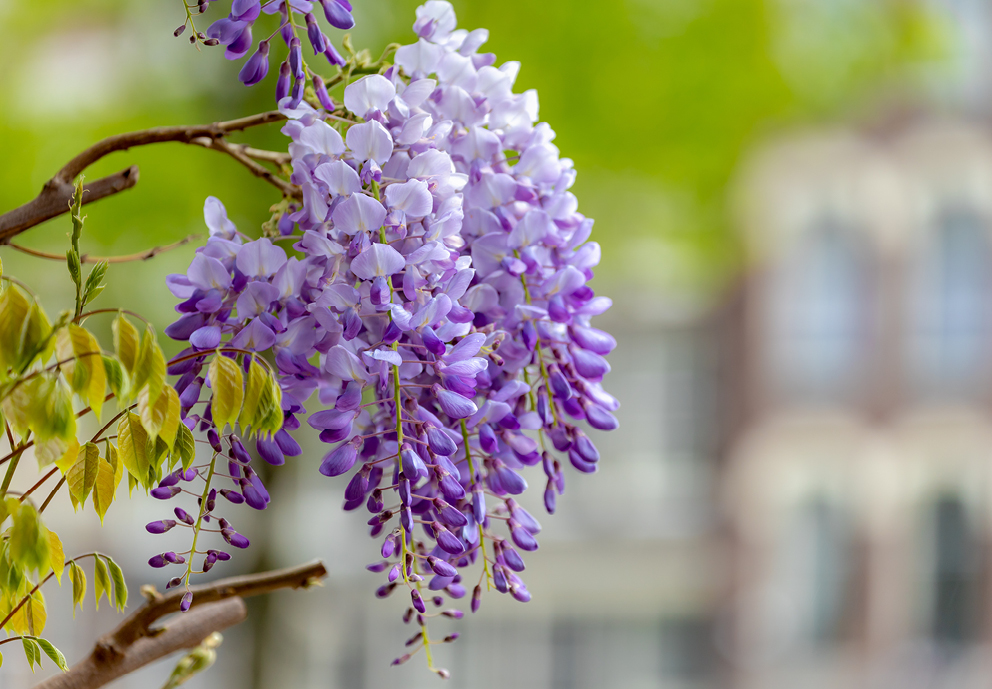
Chinese Wisteria is known as Wisteria Sinensis and is hardier than the Japanese variety. Although its racemes of flowers are shorter, there are more of them, and they tend to flower earlier. They are more suited to growing on a wall or building. Chinese Wisteria twine anticlockwise.
Both Chinese and Japanese Wisteria are scented and are vigorous climbers. Both also have a white cultivar known as “Alba”.
How to Grow Wisteria in the Garden
When planting a new wisteria, we advise first checking that you like the colour and flower form and buy a grafted plant, as it will bloom more reliably and at a much younger age. Grafting is a technique that joins two plants into one and is commonly used to help a plant survive and indeed thrive, when a cutting might take too long to grow into something desirable if it survives. In general, a wound is created on one of the plants, and another is inserted into that becoming one over time and being a more reliable plant. On a grafted wisteria, the graft will be clearly visible a few inches above soil level. Plants that aren’t grafted but have come from a cutting don’t tend to flower as well.
Soil Requirements
Wisteria are not too fussy about soil type, so long as it is very fertile and well-draining. If your soil isn’t particularly fertile or well-draining, there are ways to improve it. To improve soil fertility, you can add organic matter to the soil which will break down over time, slow-release nutrient pellets, and for good measure it can be watered with a liquid fertiliser for an extra boost right away. There are many ways to make soil better draining but one of the ways is to mix in something like perlite which will improve the soil’s ability to drain adequately. If your soil is prone to waterlogging this is crucial.
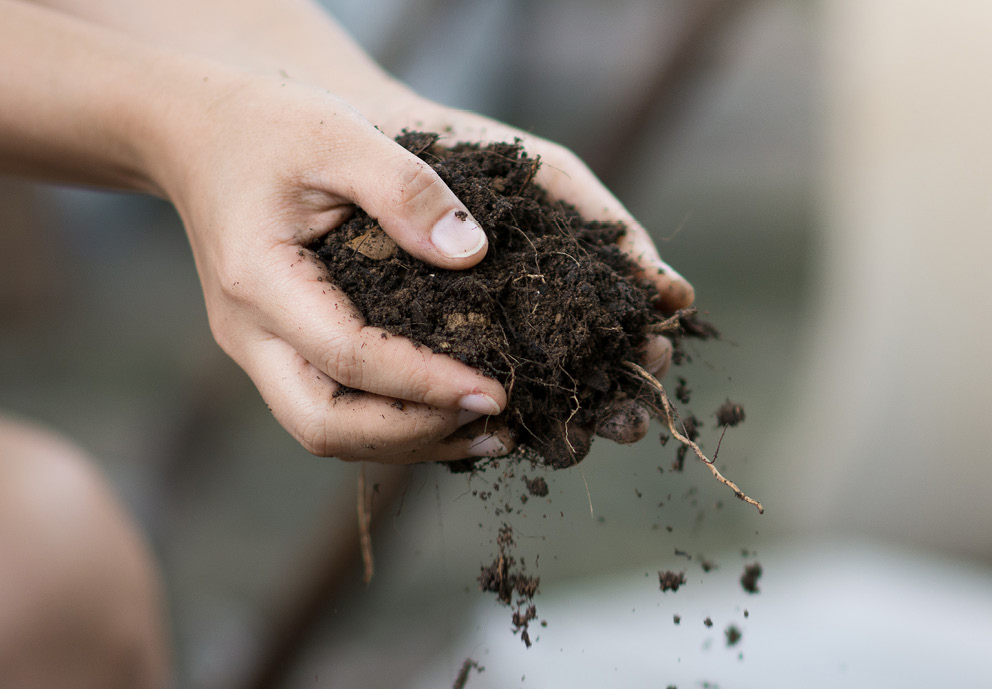
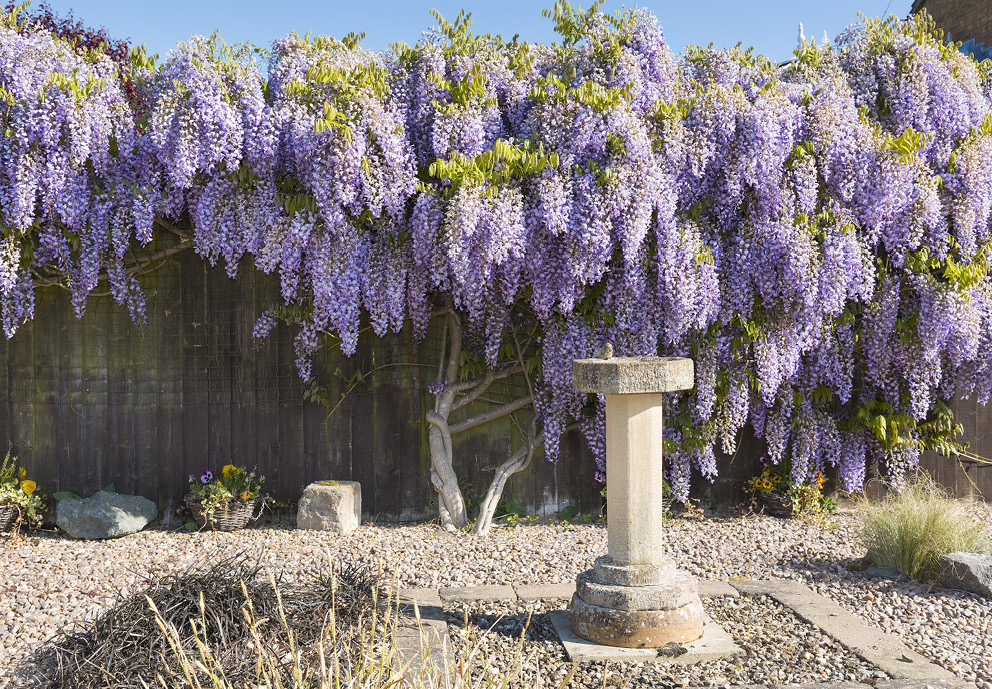
Where to Plant Wisteria for Success
While not fussy about soil they do prefer a sheltered site. This is particularly important because a late frost can damage the flowers. Moisture is essential and it is an important thing to remember when growing wisteria against the wall of a house as it may be too sheltered from the rain by the eaves.
They also like a lot of sun to grow and look their best. So, consider a south or west facing direction. While a wisteria will grow in a partly shaded spot, be prepared for it not to flower as much. If you don’t have a spot suitable, we’d probably advise choosing something else for the garden that’s just as lovely but is more shade tolerant.
You must also consider that wisterias are vigorous climbers by nature and require support to grow. They can be trained up against walls, fences, pergolas, or trellises. Just make sure they have enough space to spread their branches and roots now, and in the years to come. Wisteria will grow quite large, so it’s important to plant them in a spot where they won’t obstruct any structures or pathways. Additionally, they are sturdy plants, and can eventually separate trellises from walls, snap wires, or flatten flimsy structures as they mature, so bear this in mind too. It wouldn’t be the first time a wisteria has collapsed and snapped or ruined something in the garden after years of good growth!
How to Plant in the Ground
When planting, dig a hole twice as wide and deep as the root ball. Place the plant in the hole, backfill with a mix of soil and good multi-purpose compost. Mulch around the base with more of the compost or well-rotted manure. Water in thoroughly.
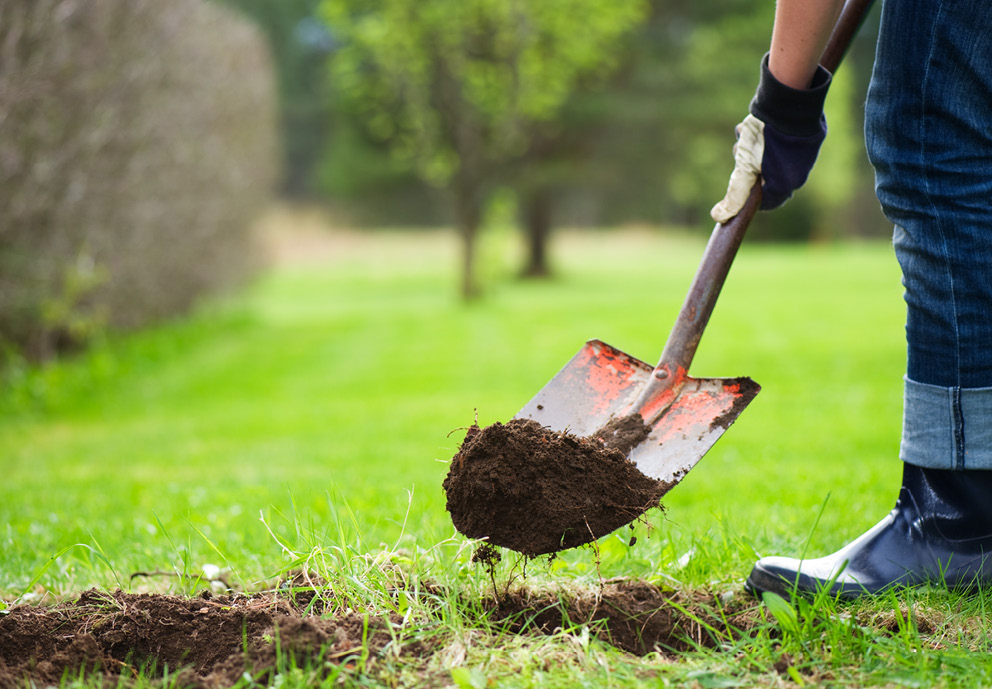
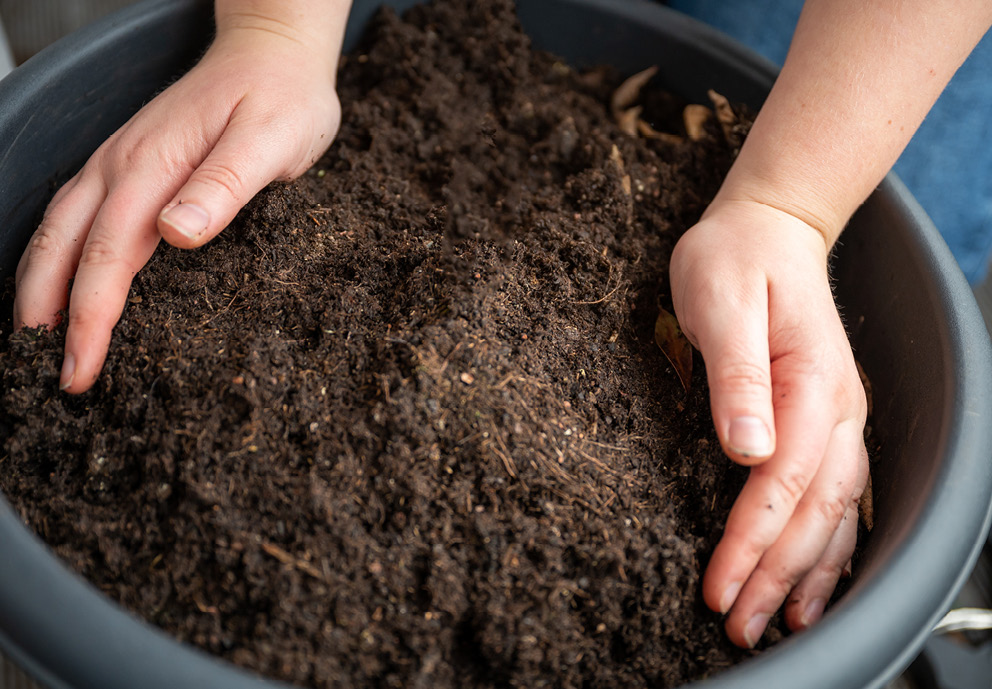
How to Plant in Pots and Containers
If you’d like to grow your wisteria in a container, you’ll need a large container of at least 45cm (18in) filled potting compost such as John Innes No. 3. It will take more effort to grow than if planting in the ground as wisteria are very hungry plants, so they’ll need more feeding. Pot grown plants generally dry out faster than ground planted ones that can spread their roots out to find moisture, so don’t let it dry out either.
When to Plant
We think the best time to plant is in autumn, when the ground is still warm from the summer sun, but there’s more moisture from the autumn rains. Planting in autumn is preferred instead of spring and summer also because at these times the plant is coping with being transplanted, and trying to grow, which can cause a bit of shock and other problems. Also, its roots would not be as developed to cope during periods of drought.
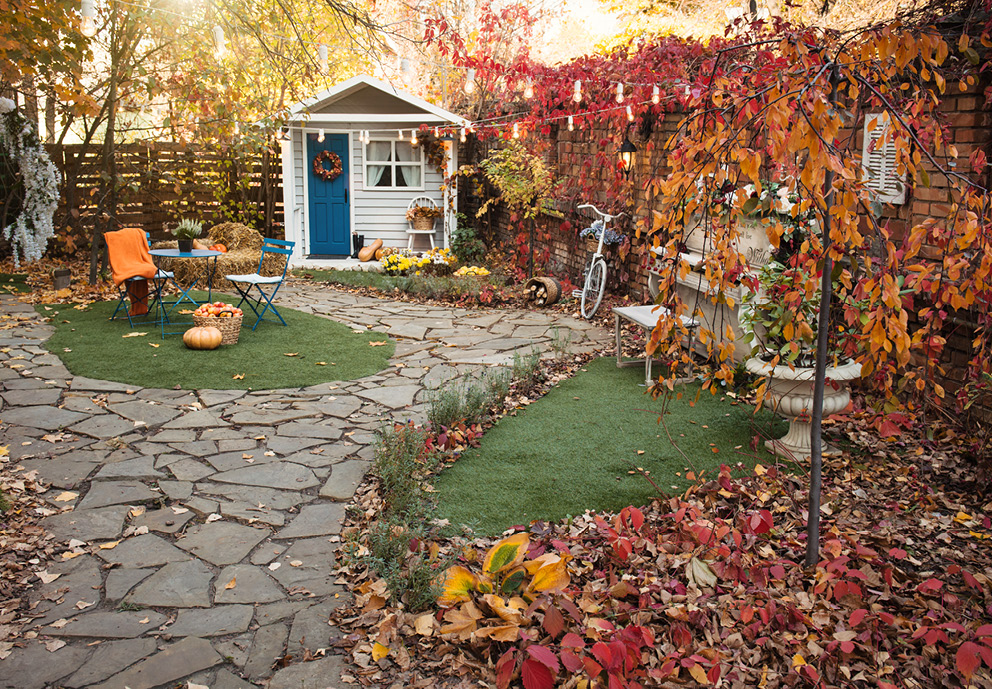
If you can’t wait until autumn or have missed the boat, then aim to plant as early as possible in the spring following the last frosts.
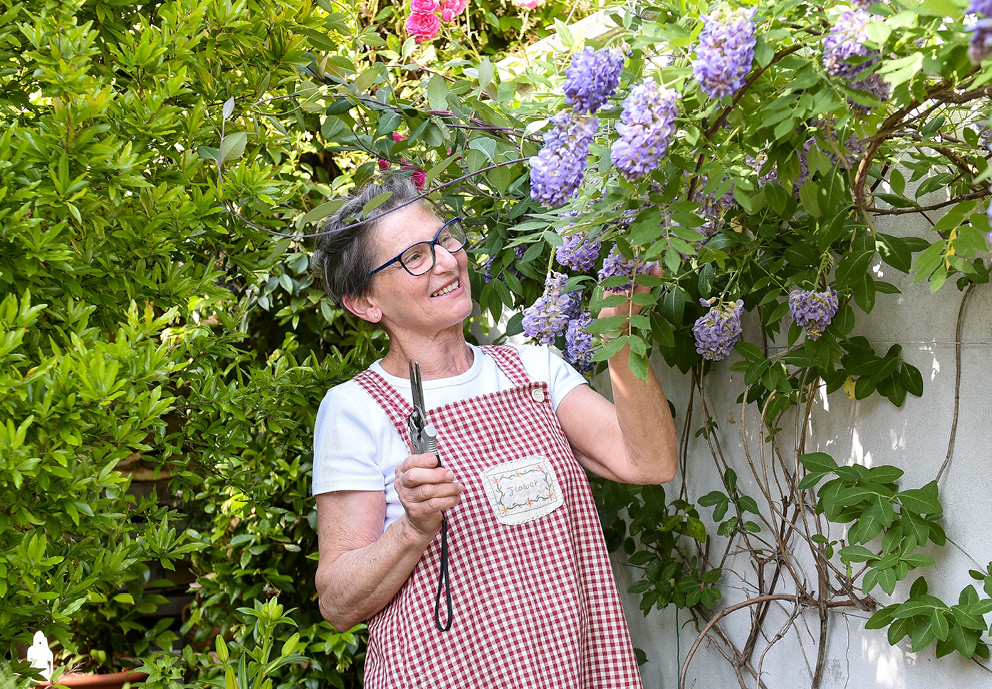
How to Prune Wisteria
Pruning thankfully is not a particularly complex procedure and should not put anyone off growing these fantastic plants. After flowering, current year’s growth can be cut back a little to within about 4cms of a flowering spur to keep the plant in check.
When to Prune Wisteria
Pruning should be carried out twice a year. In August following the current year’s growth, and then a somewhat harder prune in February.
Plant a Wisteria in the Garden
Do not be put off growing this most romantic of climbing plants. Armed with this guide you’re ready to plant a wisteria in your garden. Wisteria do not like their roots being disturbed so it may take a couple of years to properly establish and flower. Stick with it though. The reward is more than worth it. Why not give planting one a go, look after it well, and you’ll be savouring the spectacular delights of this amazing plant for years to come.
